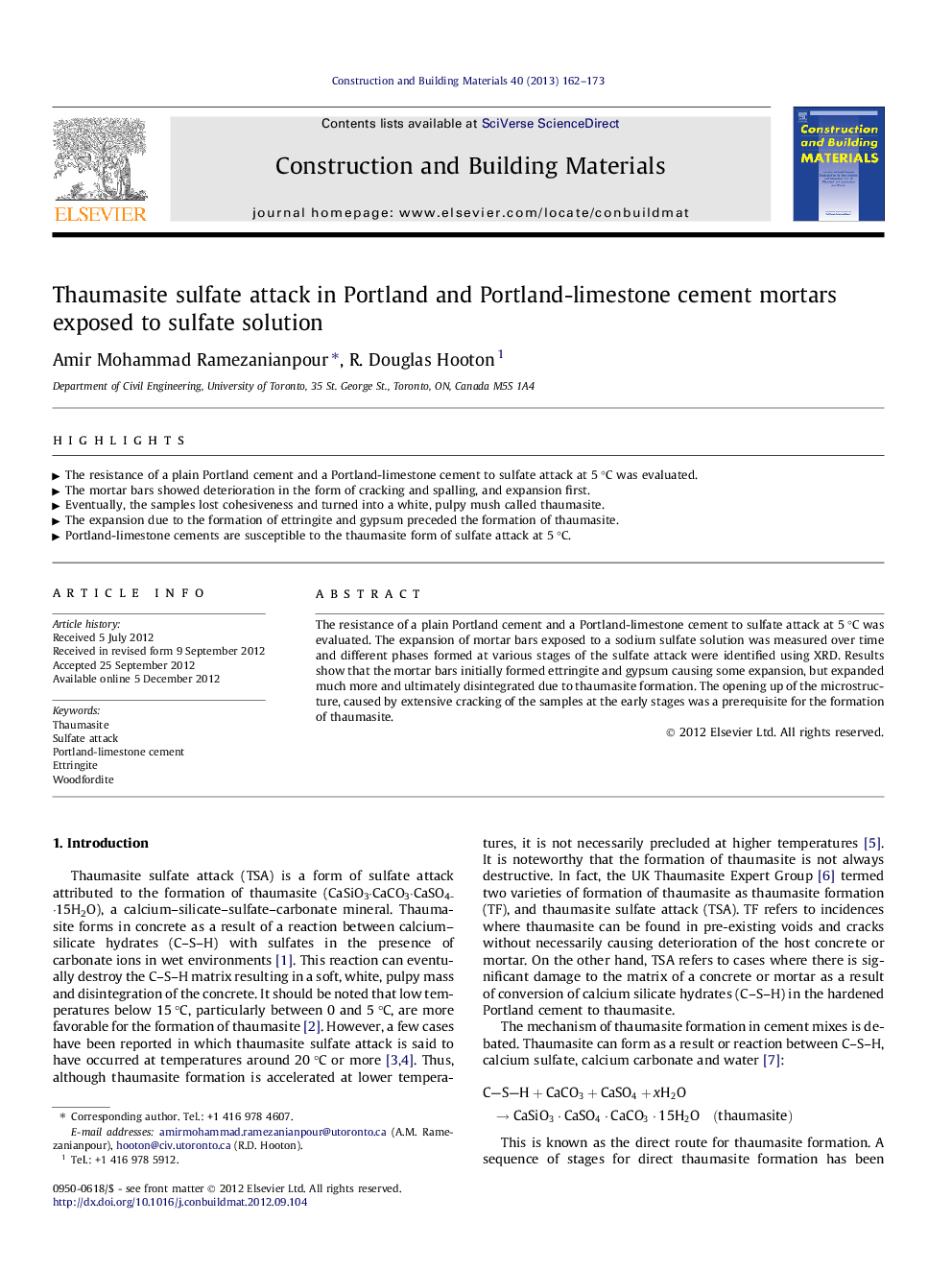| Article ID | Journal | Published Year | Pages | File Type |
|---|---|---|---|---|
| 258251 | Construction and Building Materials | 2013 | 12 Pages |
The resistance of a plain Portland cement and a Portland-limestone cement to sulfate attack at 5 °C was evaluated. The expansion of mortar bars exposed to a sodium sulfate solution was measured over time and different phases formed at various stages of the sulfate attack were identified using XRD. Results show that the mortar bars initially formed ettringite and gypsum causing some expansion, but expanded much more and ultimately disintegrated due to thaumasite formation. The opening up of the microstructure, caused by extensive cracking of the samples at the early stages was a prerequisite for the formation of thaumasite.
► The resistance of a plain Portland cement and a Portland-limestone cement to sulfate attack at 5 °C was evaluated. ► The mortar bars showed deterioration in the form of cracking and spalling, and expansion first. ► Eventually, the samples lost cohesiveness and turned into a white, pulpy mush called thaumasite. ► The expansion due to the formation of ettringite and gypsum preceded the formation of thaumasite. ► Portland-limestone cements are susceptible to the thaumasite form of sulfate attack at 5 °C.
